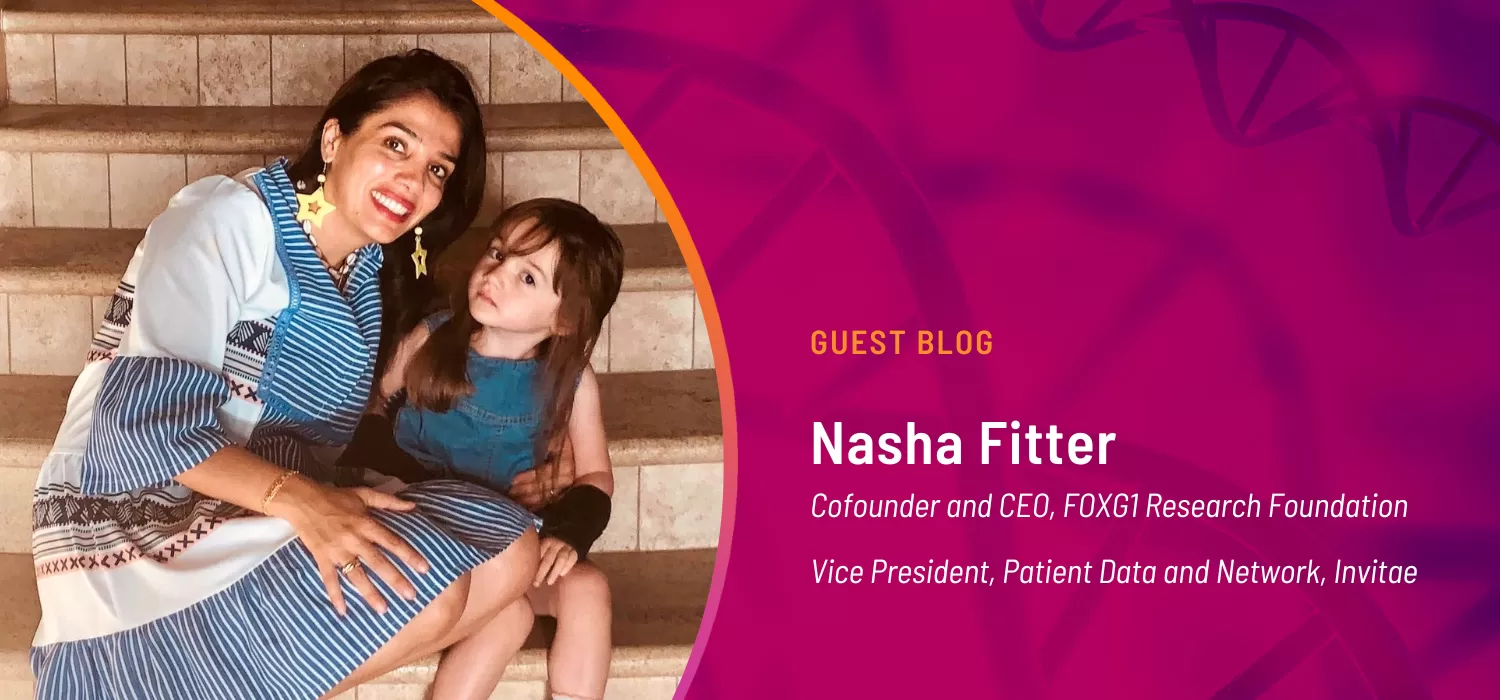Cures for Many Rare Disorders Will Come More Quickly Because of Digital Natural History Studies

Six years ago my baby daughter was diagnosed with FOXG1 syndrome, a condition previously known as “congenital Rett syndrome” because FOXG1 patients experience similar movement disorders, intellectual disability, lack of communication, and seizure symptoms. Similar to Rett syndrome, FOXG1 syndrome has no disease-specific approved therapies.
I first spoke to Monica Coenraads when I co-founded the FOXG1 Research Foundation (FRF) and have been lucky to learn from RSRT throughout the years. Like other patient-led foundations, we raise money, fund scientists, create animal models and cell lines, conduct drug screens and gene therapy pilots, and organize our community.
As an entrepreneur, I was trained to work in environments with few resources and big challenges, and to always question the status quo. I knew it was important to create a natural history study for FOXG1 syndrome. Natural history studies are important to understand how a disease progresses and what symptoms patients with different mutations experience. This information is critical for any drug development to occur.
I learned that natural history studies are normally compiled through clinical data collection using an academic, site-based model. Unfortunately, this is marred with challenges for rare diseases: 1) it takes years to collect enough data to understand a disease, 2) traveling to a clinic site results in selection bias because people who can’t get to a clinic are automatically excluded, 3) traveling to sites poses a burden on medically fragile patients and they drop out, leading to spotty data and limited patients, 4) researchers control the data, making access for patients, other researchers, and pharmaceutical companies difficult, and 5) costs are exorbitant.
To solve this challenge, I joined a young startup company, Ciitizen, that was building a platform to use a patient's own HIPAA right of access to collect the entirety of their medical records. Ciitizen would then mine the records to pull out entities that map to a disease ontology. I felt this platform was ideal for rare diseases — our children visit their doctors frequently and have a lot of medical records. If we could just pull and normalize data from their own medical records, we could build a rich natural history study without all the challenges that come from an in-person observational study.
Our team at Ciitizen succeeded in this mission. We brought on early adopters — FOXG1 syndrome, Rett syndrome, Syngap1 syndrome and a handful of others — and built a platform where data can be collected quickly and accessed by patients, advocacy groups, researchers, and biopharma companies. We were thrilled when Praxis Precision Medicines utilized data from our SCN2A cohort instead of a traditional, in-person, site-based collection model for their antisense oligonucleotide IND application for pediatric patients. This is one of the first known cases of a patient-advised medical records platform being used as the primary natural history data source for a successful IND filing with the FDA, accelerating their clinical trial by five years.
Today our Rare Patient Network can help all neurological patients who experience seizures or developmental delays. Ciitizen has since been acquired by genetic testing company Invitae, where I am now the vice president of patient data and network, as we continue our mission to help rare disease patients. Invitae’s leadership in genetic testing and programs such as Behind the Seizure enable us to assist patients all the way from diagnosis to treatment, having in-depth insight into both genetic and clinical factors.
Sign up for the Rett syndrome digital natural history study with Ciitizen.


